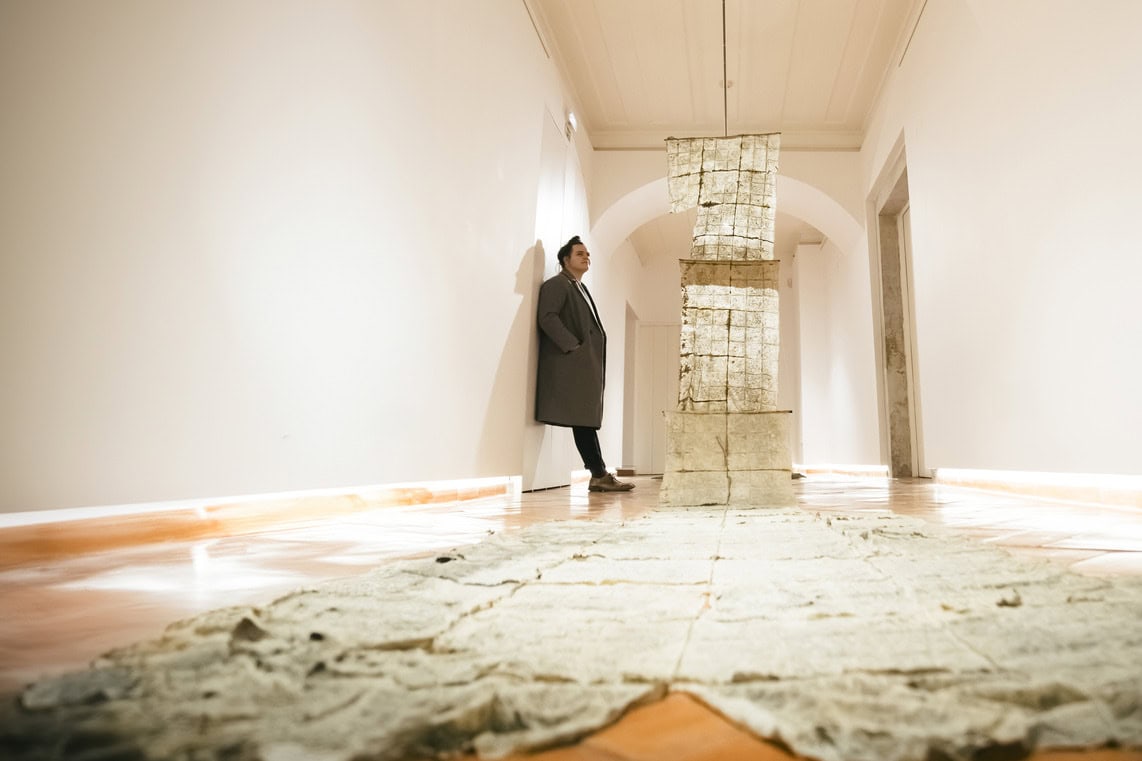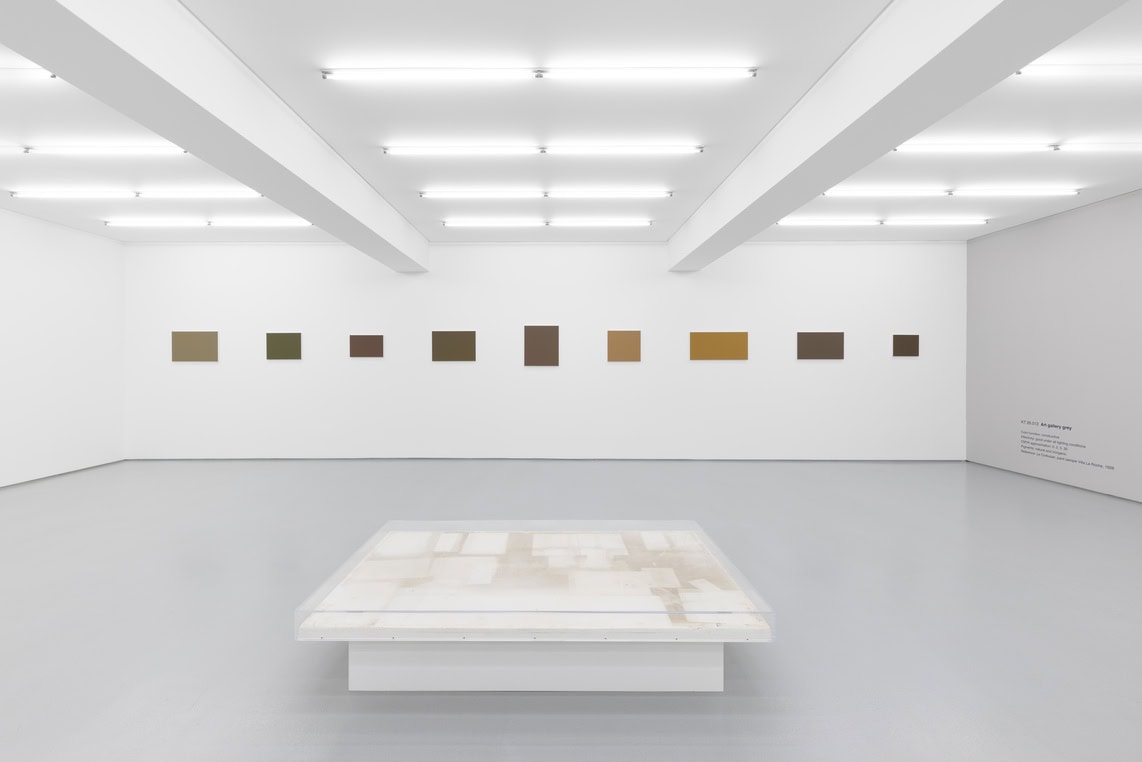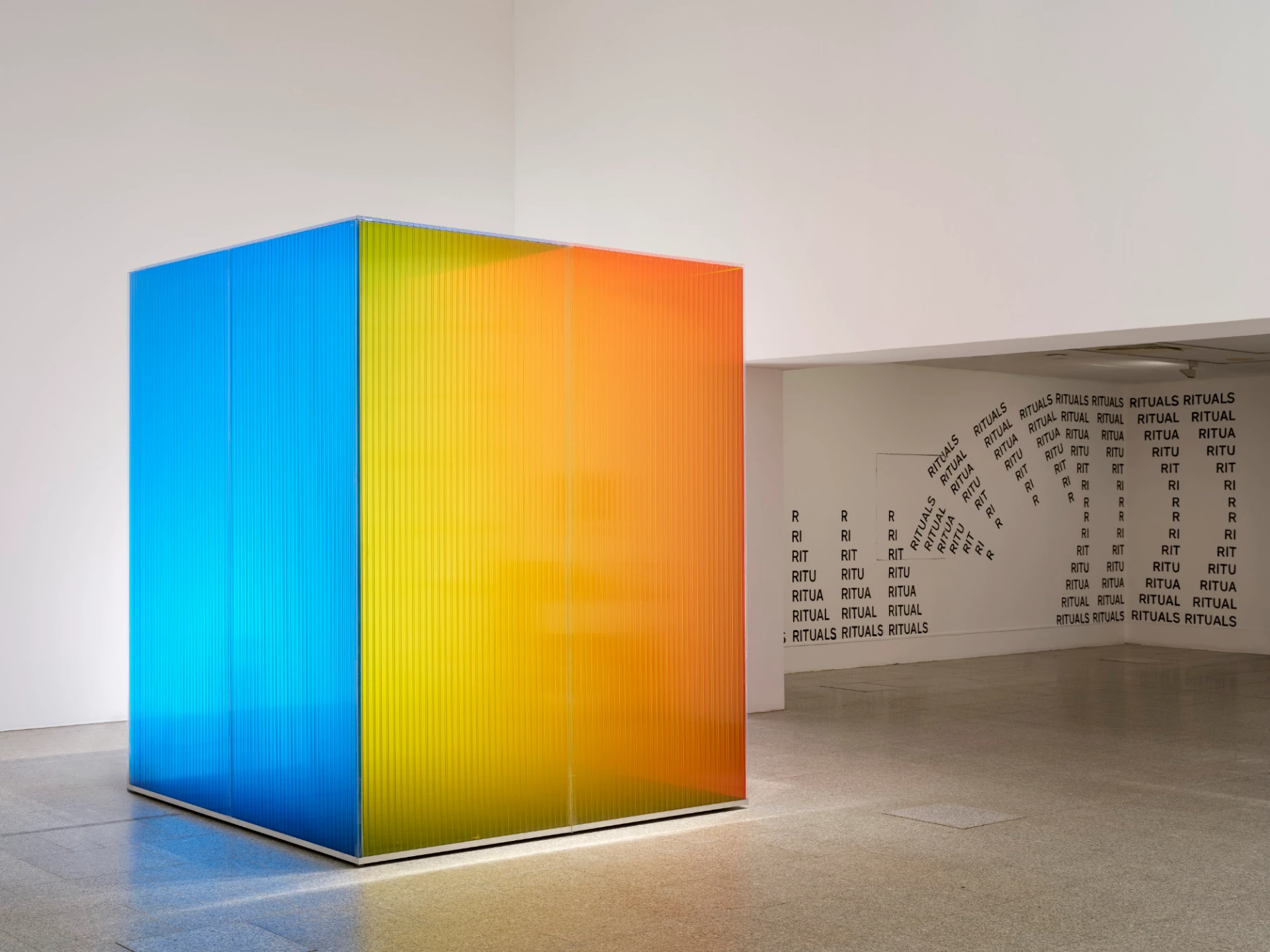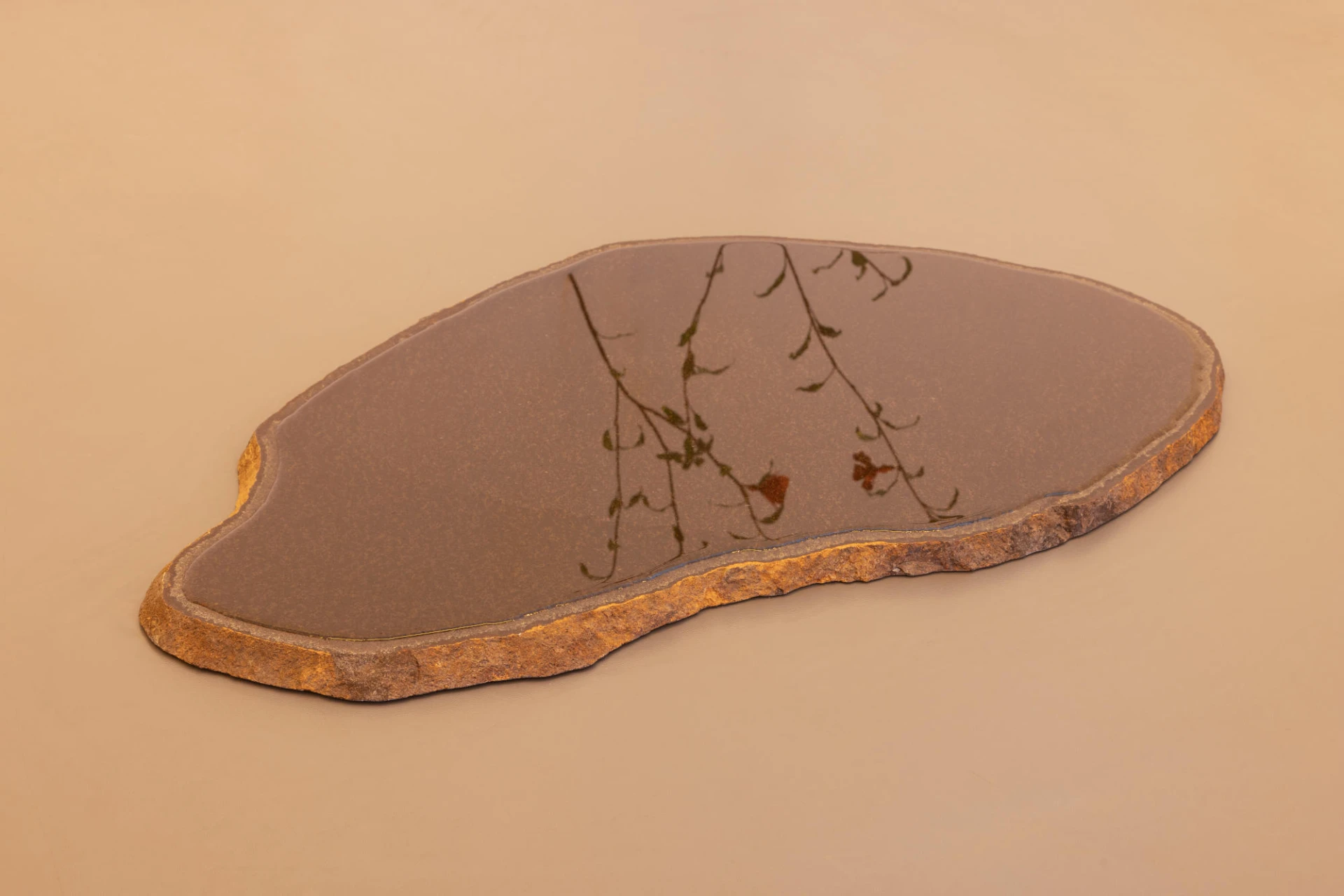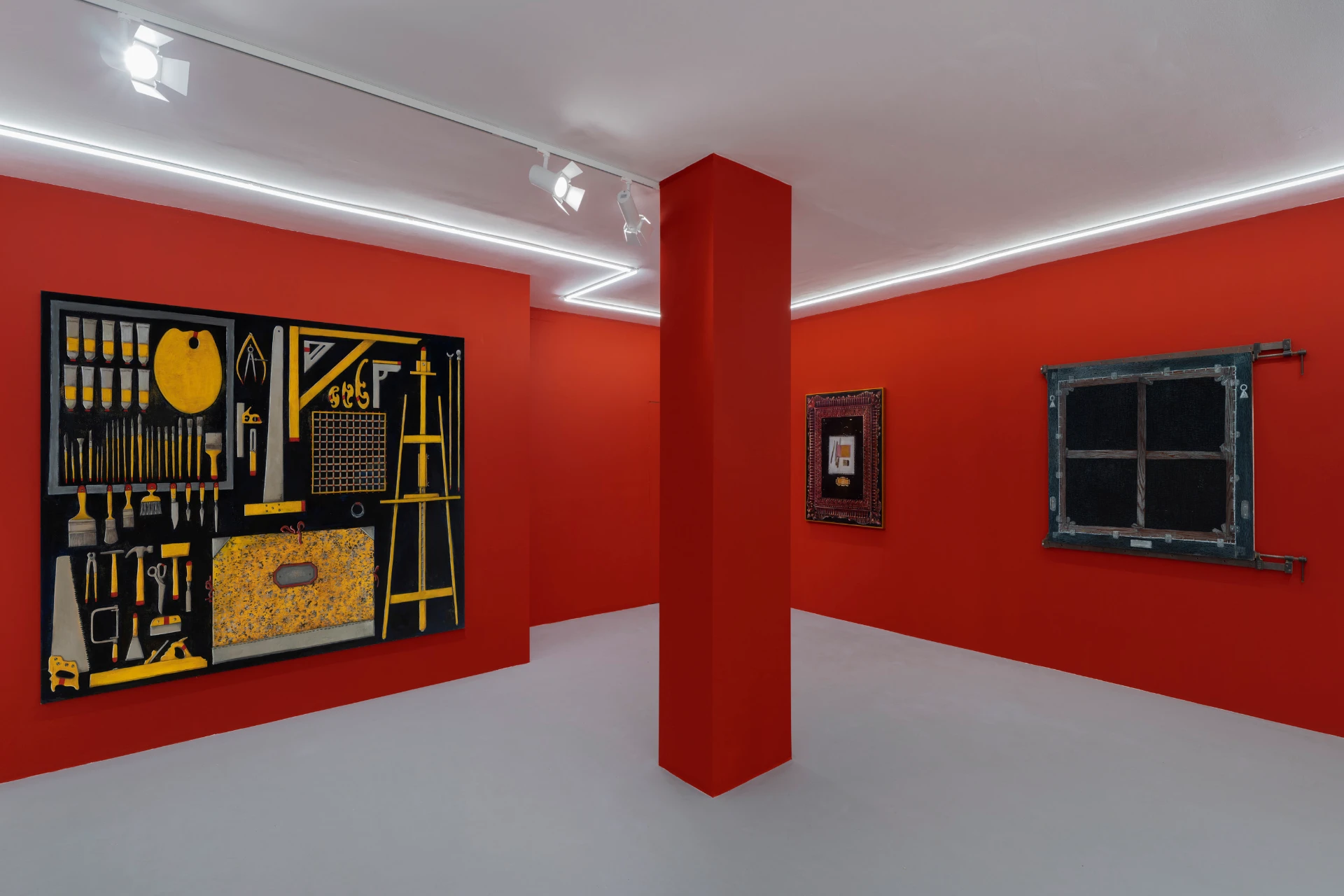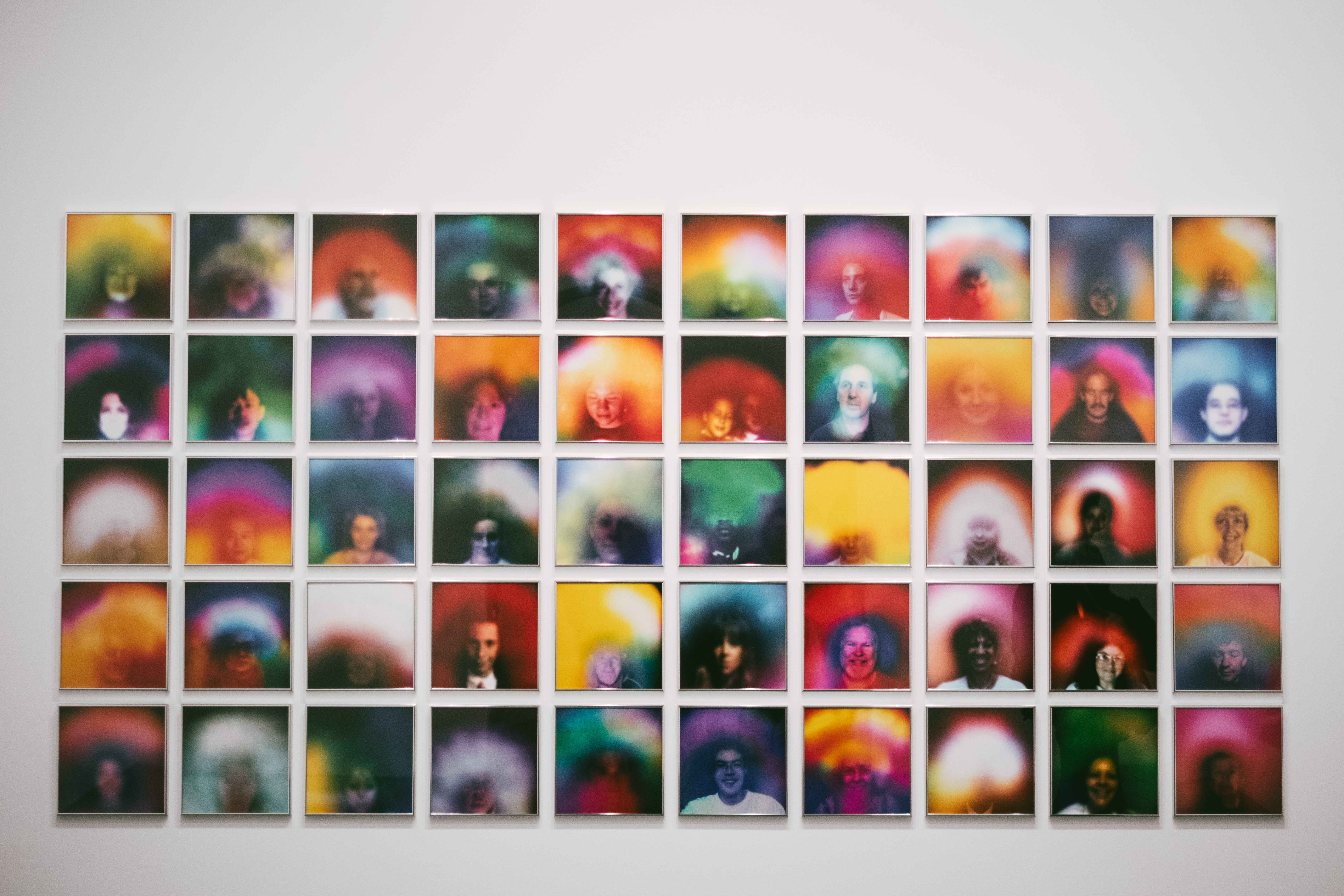I start this piece on Retomar o Passo – Luísa Salvador’s first solo exhibition at Galeria Foco – with Caligrafias do Deserto (2025), a work in which I found myself surrounded by words, in a suspended time, devoid of coordinates.[1] One hundred pieces are distributed on the curved wall of the lower floor, forming a visual composition where the insistence of the written word generates a paradoxical sense of permanence, in which the passage of time becomes elusive, slow, confusing perception. These are words repeated in a rhythm that is inscribed like a silent mantra, jotted down over the course of a hundred days in a diary-book that precedes this exhibition[2], which extend beyond their semantic function and become plastic matter, the trace of an intimate gesture. With earthy tones, the writing traces a sensorial path that we have trodden, a memory archive and lingering ideas.
Luísa Salvador’s artistic practice uses memory as a recurring theme. It manifests itself as a sensitive field in which past and present interact in a poetic labour of love that melts and resurfaces in various formats. In this exhibition, our bodies are paralysed in front of the word-images that we suspect are stored in Salvador’s memory, facing the ruins of stories that life allowed us to preserve, vibrating between remembrance and persistence. Every now and then we need to take a step back – to see better or to stop seeing altogether -, then go back in, change course, return.
By dwelling in works such as O luto das pedras, A perda irreparável das flores and Se eu fazia um levantamento das questões (2025), the word becomes a body, a trace, a scar. The contours of the writing spring from gesture and thought, carving out a visual pace that resembles an affective map, where scraps accumulate, superimpose and somehow want to be depleted, in the insistence of repetition. They seem to want to shorten the path, make shortcuts between memories. They are what is left after a breath, they stretch beyond the medium, and are inscribed as traces, in an attempt to eternalise what stubbornly remains forgotten – So sweet they are comforting.
She is deeply connected to theoretical reflection and her artistic practice is a testament to the interest she holds and explores between poetic representation and nature. Her relationship with geology stretches back to her childhood and is evident in the way she works with material. The processes she uses are considered metaphors for the passage of time and the development of identity, apparently in an effort to explore an expanded scale of existence. The repetition itself in her work – the emphasis on paths, sentences, trails mapped out with accurate and targeted gestures – takes on a meditative quality, an attempt to catch that which is always transformed but never entirely disappears. In this visible and invisible engagement, Luísa Salvador drives another, more volatile and dynamic time, which is not linearly comprehensible. Memory and thought never follow a single path. They contort, change, reflect and remake themselves.
Her work acquires a new density on the Gallery’s upper floor: an emotional mapping where the traces of her own interesting journeys are registered. Canvases uphold the seemingly scratched mountains, in a colour counterpoint that intensifies the territory’s solidity and resistance. Retomar o Passo I, II e III embody an almost metaphysical essence, emerging from a tense position between documentation and imagination. As she maps out trails, draws fictitious surfaces, scrawled with a blade in detail and motion[3], the artist turns the landscape into an archive, a silent witness to its non-fixed nature, to what is reshaped by time and metamorphosis. The solid forms echo this conflict between stability and mutability: bodies resistant to erosion, but at the same time subject to the same forces that shape them. These elements are symbols fraught with meaning, representing the crossroads between the natural and the human, inviting us, as Salvador’s work has accustomed us to, to ponder our own existence and relationship with the natural world.
Retomar o Passo is also a resistance act to the lure of getting somewhere. There are no paths with destinations, only echoes, perspectives and hypothetical pathways. The works resemble fragments of a whole which is never fully revealed, as if the artistic process itself were condemned not to find its end point, not to exist in a straight line with a one-way street. This continuous nature gives the work a depth that helps the viewer to get in and out of it; it allows them to wander through the spaces between repetition and change, between memory and reinvention. At all times there is a step yet to be taken, an unwritten word, a contour to be drawn.
The exhibition also looks like an attempt at reinterpretation – a perspective that, upon recovering dispersed fragments, rearranges them in a new light. Uncertainties and hesitations laid bare to the power of revision. To create and circumscribe to expand, allowing that which insistently refuses to close itself to reemerge in a transfigured manner. Her works stand here as excavation testimonies, a storage space, where the accumulated marks are remnants of a process, of a materialising and dissolving mindset, where each layer both conceals and reveals that which has existed and still does. They tell of a path that has been travelled, the traces of testimonies of bygone presences.
The idea of retomar (to resume) – and maybe reinventing – that runs throughout the exhibition not only seems to suggest a return to the past through traces, but a new way of observing what has already been and is already gone. Discontinued, multi-layered time transforms and allows us to rethink and reclaim. Each work seems to contain an impulse to go back, to reimagine, reinterpret, reread and to recognise, in the multiple layers of time, the things that survive and define us. Everything we have lost, kept and transformed may not yet be entirely visible, but somehow it already belongs to us.
Retomar o passo is an exercise in rewriting time, in recognising the traces of what we were and what we will still be.
The exhibition is open until March 13, 2025.
[1] The title of the article is a reference to some sentences in the work Caligrafias do Deserto (2025), found in the exhibition.
[2] Text by Carolina Trigueiros, part of the exhibition.
[3] Text by Carolina Trigueiros, part of the exhibition.
